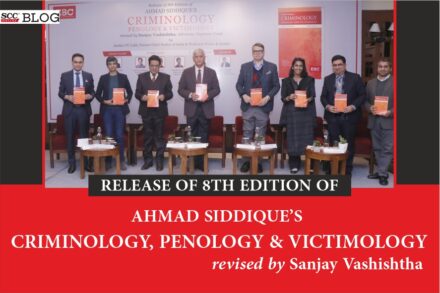Introduction
The doctrine of damages constitutes a pertinent role under a contractual relation. Damages refers to the compensation awarded to the party who has suffered as a result of breach by the other party to the contract. Now, such a loss may or may not always be capable of being quantified and hence, the court in its wisdom has to determine the amount, as it considers reasonable given the facts and circumstances of every case.
In India, awarding of damages is enshrined in Sections 73 and 74 of the Contract Act, 18721 (ICA) which guides the determination of the compensation amount and the penalties which must be awarded in the case of a contractual breach. These principles not only guarantee the right of the suffering party to claim a compensation amount, but also sets out outer limits on which the relief can be claimed. The importance of these provisions plays a crucial role in upholding the sanctity of contracts as they embody the core contractual principles of fairness, reasonableness, and justice.
The jurisprudence behind the doctrine of damages has seen a lot in these times and hence, has seen a complete evolution in itself with respect to shaping how compensation is awarded in breach of the contract cases. Especially with the advent of complex commercial transactions, the need for a fair approach in awarding compensation amounts has become even more crucial and therefore, the role of the courts in determining damages has become an important aspect in contract enforcement.
The doctrine of damages: Exploring Sections 73 and 74 of the Contract Act, 1872
Section 73 of the Contract Act, 1872 deals with “compensation for loss or damage caused by breach of contract” which provides that when one party does not fulfil a contract, the other affected party is bound to be compensated for the same.2 Furthermore, it is pertinent to note that this compensation amount will only be given for the damages which naturally arose or the parties had the knowledge of the same. Such compensation shall not include any indirect/remote damages which could be sustained by the reason of such breach. For instance, if there was a breach of the contract due to which a business suffered, however, there was no direct link to the contract; such a breach will not be compensated under this provision.
Building upon this is Section 74 of the ICA applies when a penalty or a pre-specified sum is specified in the contract, the party who has suffered has the right to claim that amount as “compensation” for the breach of contract.3 The party who has suffered from that breach does not have to prove any actual loss or damage. The mere fact that the contract was breached would be enough to claim the penalty as specified in the contract. Even if the penalty or compensation is stipulated for, the award for it by the courts must be reasonable and mere statement must not bind the court. In Fateh Chand v. Balkishan Dass, the Supreme Court held that the purpose of this provision is to ensure that the damages that are claimed for the breach are reasonable.4 Even if the sum is specified in the contract, the claimant must show that the amount is reasonable, otherwise the court has all the discretion to grant a reasonable sum.
Jurisprudence of courts while awarding penalty in India
There have been several principles, on the bases of equity and natural justice which the courts rely upon to award compensation to the affected party. This section will look at those judgments wherein the doctrine of damages has evolved over time.
In Kailash Nath Associates v. DDA, it was upheld by the Court that while determining a reasonable compensation amount, the amount shall not exceed the amount that has already been stipulated for as liquidated damages/penalty under Section 74.5 The Court also emphasised that forfeiture of earnest money could occur under certain circumstances, such as in public auctions, where forfeiture may happen before a formal agreement is reached, and Section 74 would not apply. However, once an agreement is reached, any forfeiture must be backed by actual loss or damage caused by the breach. In this case, the Court noted that Delhi Development Authority (DDA) received a higher amount on reauction, showing that no actual loss happened, yet it still sought to forfeit the earnest money. This reinforced the principle that Section 74 only applies when there is actual damage or loss caused by the breach and forfeiture without loss is not justifiable under the law.6
The Supreme Court in Chunilal V. Mehta and Sons Ltd. v. Century Spg. and Mfg. Co. Ltd. held that if specified stipulation has been made in a contractual dispute, then the claimant cannot claim compensation under the general law, one is bound by the clause mentioned in the contract.7 On the similar lines, in Plus91 Security Solutions v. NEC Corpn. India (P) Ltd., it was held that if the parties have agreed to a particular kind of damages via their agreement, then that agreement has to be implemented.8
A pertinent issue has been resolved by the Delhi High Court in a series of judgments and that is, “Whether a contractual clause which prevents a party from claiming damages for breach or delay of the contract is valid or not?” This was answered by the Court in Simplex Concrete Piles (India) Ltd. v. Union of India wherein it was held that such clauses which prevent an innocent party from claiming damages are explicitly void and invalid.9 The Court further observed that the right to claim compensation in the breach of contractual obligation is an integral part of contract law and must not be taken away in any circumstance. A year later, similar reasoning was adopted by another Bench of the Delhi HC in MBL Infrastructures v. DMRC Ltd., which held that a contractual clause which blocks a party from claiming damages is unfair and contrary to public interest.10
Another important case where the Supreme Court laid down pertinent formulae with respect to damages is McDermott International Inc. v. Burn Standard Co. Ltd., the issue was pertaining to calculation of damages when the exact amount cannot be determined, particularly in construction contracts.11 The Supreme Court referred to three widely accepted formulae for computing damages  the Hudson formula, the Emden formula and the Eichleay formula. These formulae are used in calculating additional costs that a contractor might incur due to delays such as increased overhead costs and loss of profit.
(i) The Hudson formula calculates overhead costs by using the head office overhead percentage specified in the contract, but it has received a lot of criticism for not reflecting the actual costs incurred by the contractor, as it relies on the contract-based figures rather than real expenses.
(ii) In contrast to this is the Emden formula which is considered rather precise than the Hudson formula because it uses actual overhead and profit percentage of the contractor’s entire organisation, and not just figures from specific contracts.
(iii) Lastly, the Eichleay formula is particularly used when it is difficult to prove loss of opportunity due to delays. It involves calculating the total overheads for the project and then determining a daily overhead rate, which is multiplied by the delay period to calculate the damages.
Mc Dermott case12 clarified that these formulae are essential tools for calculating damages where exact amount is not easy to measure. The Emden formula, in particular, stands out in accuracy for reflecting the contractor’s actual costs, making it a preferred method in most cases, as it takes into account the overall financial health of the contractor rather than just the contract-specific details.13 This formula is being widely accepted and used till date in contractual disputes. With respect to Hudson formula, it was held in Essar Procurement Services Ltd. v. Paramount Constructions and Edifice Developers & Project Engineers Ltd. v. Essar Projects (India) Ltd., that this formula cannot be relied upon in the absence of the party proving an actual loss, meaning thereby that the actual damages suffered have to be quantified for the Hudson formula to be applied. In the absence of a real quantification, this formula is liable to be dismissed.14
Building upon this, the Supreme Court of India in Unibros v. All India Radio15 and Batliboi Environmental Engineers Ltd. v. Hindustan Petroleum Corpn. Ltd.16 has indicated the need for evidence which is required to be proved by a contractor for being entitled to a claim for loss of profit and overheads. It was further noted that in the absence of this evidentiary standard any award granted will be liable to be set aside on the grounds of it being contrary to this principle.
In Fateh Chand v. Balkishan Dass17, Maula Bux v. Union of India18 and ONGC Ltd. v. Saw Pipes Ltd.19 it was held that in a claim for liquidated damages, a party is not entitled to anything further than the reasonable compensation and that the stipulated amount is merely the upper limit till which such compensation can be awarded. Such damages can only be recovered in cases wherein actual loss has been suffered, not otherwise.
In a case pertaining to Section 37 of the Arbitration and Conciliation Act, 199620; the Delhi High Court emphasised the need for having stipulated an actual penalty. Simply stating a penalty or liquidated damages clause in a contract, does not automatically entitle the claimant to the full amount that is specified.21 The presence of such clauses does not exempt the party from showing how the breach caused a loss, and damages cannot be awarded without this proof. Therefore, a party must substantiate their claim with evidence to demonstrate the actual loss incurred due to the breach. In Indian Oil Corpn. Ltd. v. Fiberfill Engineers, it was observed by the Delhi HC that an arbitration award will be set aside due to patent illegality if the damages are not proven.22 Now these cases in the context of arbitration matters are pertinent to show the innate necessity to show real damage or loss to the claiming party.
In yet another recent development in Cobra Instalaciones Y Servicios SA & Shyam Indus Power Solution (P) Ltd. v. Haryana Vidyut Prasaran Nigam Ltd.233, a Division Bench of the Delhi HC upheld the quantification of damages through a “rough guesswork” or a “rough and ready method” at places where it was difficult to quantify damages. This is a significant development in the field of damages since it bestows the discretion upon the arbitrator/the Judge to award damages based on a reasonable assessment.
Concluding remarks and the way forward
Although the jurisprudence with respect to doctrine of damages has evolved over time, given the immense contribution of Indian judiciary, it is crucial for the courts to continue emphasising on the importance of actual loss or damage caused by the breach of contractual obligation, as opposed to awarding arbitrary amounts. Courts must continue to refine their methods of calculating the penalty amount, especially in complex commercial cases wherein precise quantification becomes a challenge for the courts.
The judiciary, in upcoming cases, must focus on striking a balance between allowing for pre-agreed sums and ensuring that the damages are awarded in a manner that aligns with the principles of equity, justice, proportionality and rationality. Lastly, the importance of evidence in supporting damage claims must be reinforced in both litigation and arbitration cases, as was emphasised in Fiberfill Engineers case24.
In conclusion, the doctrine of damages in contractual settings serves as a cornerstone in upholding fairness and justice and the Indian jurisprudence has significantly evolved in its approach to awarding compensation for contractual breaches. It is crucial that the courts remain precise and vigilant in quantification of the damages and that the judgments are supported by adequate evidence which aligns with the eternal principles of the Indian Constitution. By doing so, the Indian legal system can uphold the integrity of contractual agreements while providing a fair remedy to the aggrieved party, thus maintaining trust in the legal process and fostering a more reliable commercial environment.
*Advocate (Litigation & Dispute Resolution). Author can be reached at: adv.abhisheksingh014@gmail.com.
**4th year student at Symbiosis Law School, Noida. Author can be reached at: khushi.bansal@symlaw.edu.in.
1. Contract Act, 1872, Ss. 73 and 74.
6. Kailash Nath Associates case, (2015) 4 SCC 136.
13. Mc Dermott case, (2006) 11 SCC 181.
14. 2016 SCC OnLine Bom 9697; see also 2013 SCC OnLine Bom 5.
20. Arbitration and Conciliation Act, 1996, S. 37.
21. Sudershan Kumar Bhayana v. Vinod Seth, 2023 SCC OnLine Del 6097.







Excellent article.
Well done & keep it up
Thank you Rajesh